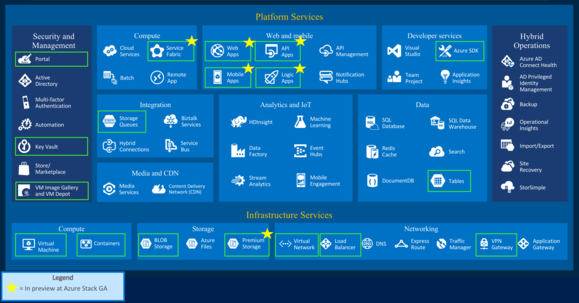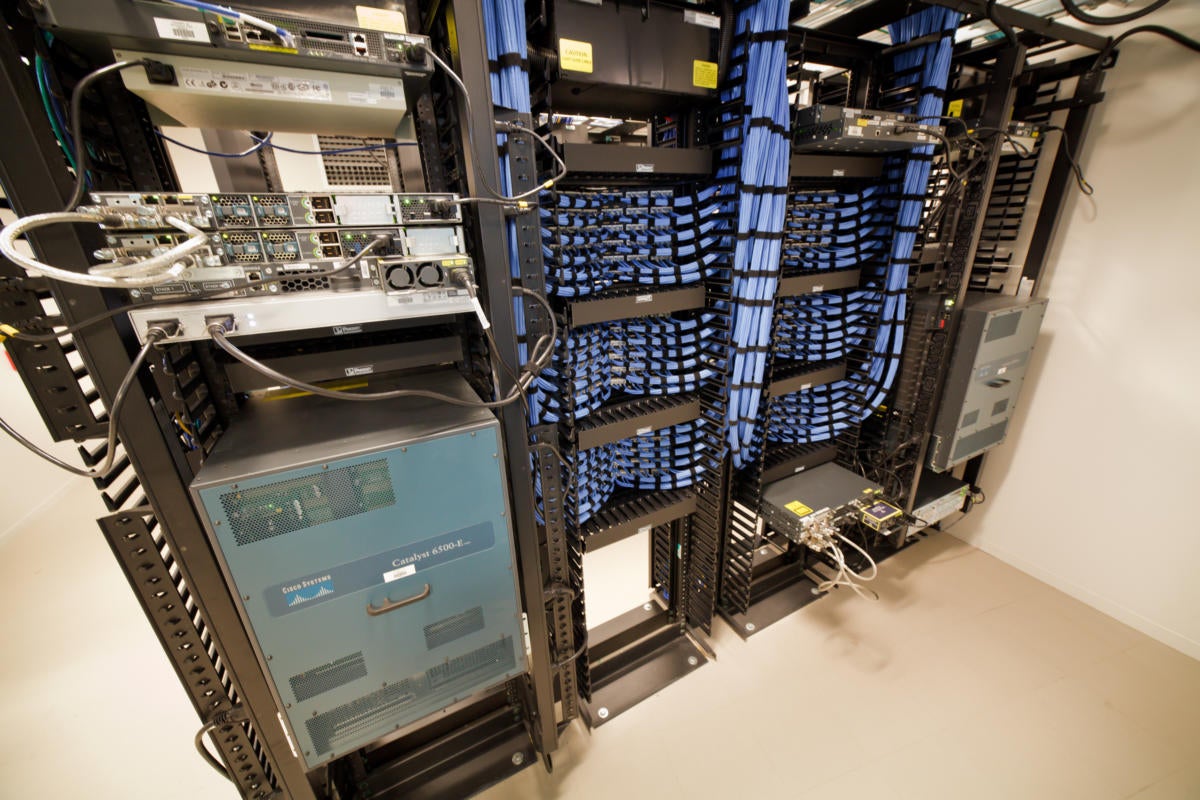Microsoft在星期五发布其Azure Stack私有云平台的第一个技术预览,这将允许客户从Azure公共云中带入自己的数据中心。2020欧洲杯预赛
微软announced Azure Stack last spring at its Ignite conference, but it didn't offer many details about how the system would work. With this first technical preview, IT professionals and developers with powerful enough hardware will be able to spin up an Azure Stack instance and give it a shot themselves before Microsoft makes it generally available later this year.
Azure Stack is an attempt to bring the utility of Microsoft Azure to customers’ data centers and expand its reach to regions of the globe that Microsoft's cloud service hasn't yet touched. Companies will be able to install it on compatible hardware and then use that to run a private instance of Microsoft Azure, using some of the same tools they’re used to working with in the public cloud.
人与微软的公共clo自在ud tools will feel right at home with the Azure Stack management portal, which is essentially the same one they’ll find in the public cloud. The same thing goes for the services included in this first technical preview, including the ability to spin up virtual machines and build websites using a beta version of one part of Azure App Service. Azure developers and administrators who are used to working with tools like PowerShell, Visual Studio and Microsoft’s Azure command line tools for Linux and Mac OS X will be able to use them to work with an Azure Stack setup as well.
That said, the technical preview only offers a small subset of the services Microsoft makes available to its public cloud customers, and Azure Stack won’t have the full suite of Azure public services available when it launches later this year.
 微软
微软
在今年晚些时候推出时,还可以通过Azure堆栈提供哪个公共云Azure服务的图表。
部分是由设计的。Some of the public services like Azure Machine Learning or Azure Data Lake make the most sense in the public cloud, where users can take advantage of the scale and power of Microsoft’s data centers, and will likely stay there, though the company may bring them to Azure Stack sometime in the future. It also makes sense for Microsoft to hold onto some of its most powerful services for itself, so the company’s public cloud offering is still the most appealing one for people who want a full-featured Azure experience.
除了企业外,Azure堆栈还针对服务提供商,并将允许他们为自己的客户提供Azure服务。该功能的目标是在没有附近的Azure地区的提供者,以及那些想要提供微软无法提供的某种优质云服务的公司。
技术预览需要一个漂亮的Beefy物理服务器:微软推荐a system with 16 physical processor cores, 128GB of RAM, a Hyper-V enabled BIOS and a network interface controller certified for Windows Server 2012 R2. The system will need five physical disk drives (either SSDs or traditional spinning hard drives) with one dedicated OS disk with at least 200GB available, and 4 disks for storing data with 250GB of space available.
对于将购买新硬件来测试Azure堆栈的公司,Microsoft建议戴尔R630和HPE DL 360 Gen 9服务器。此时,由于嵌套虚拟化需要Windows Server 2016作为主机操作系统,因此无法在Azure的公共云版本上运行预览。
当Azure堆栈通常在今年年底发布时,管理员必须致力于将至少四个物理服务器进行运行。Microsoft还没有为所有这些设备提供最终的最低系统要求,但Microsoft的主要集团计划经理Vijay Tewari表示,它可能类似于运行概念验证技术预览所需的内容。
该配置(无论是什么)都足以让公司运行生产工作负载,但使用最小硬件将限制可以运行的工作负载的数量和类型。公司将能够以四个物理服务器的集群开头的公司建立自己的Azure堆栈环境,而Tewari则表示,微软还将使用像Dell和HPE这样的服务器制造商,以创建用于在框中运行Azure堆栈的系统。
所有这些都旨在为试图展现在房地上基础设施和公共云之间的企业的企业创造一个引人注目的混合云系统。Azure堆栈是一种方法来做到这一点,具有一组一致的工具,旨在让开发人员无缝地跨两个环境工作。如果微软的推送成功,它可能是对公司的云业务两者都是促进人们支付Azure堆栈,并且在公共云服务上开始花费更多。






